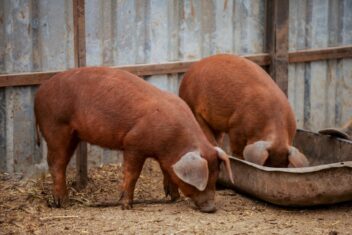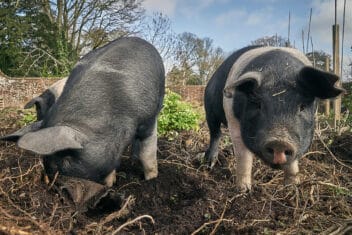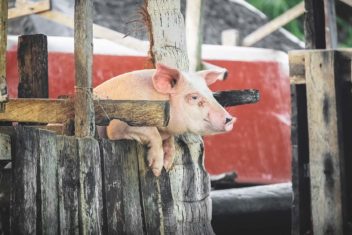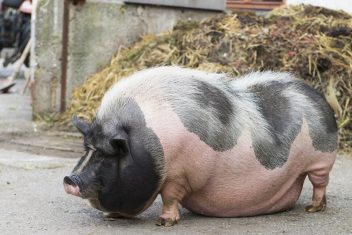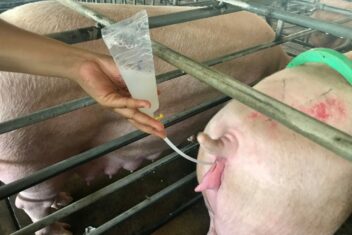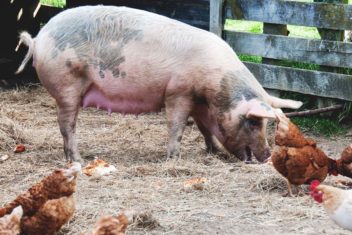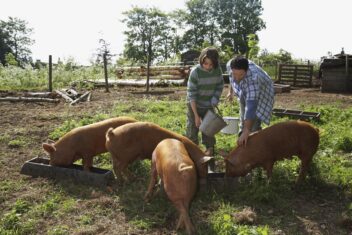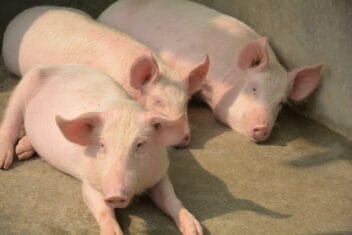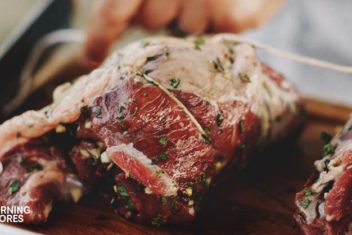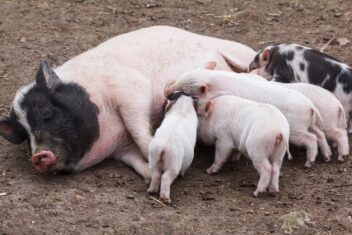When it comes to diagnosing and treating a pig for any kind of ailment, let’s just say it’s definitely going to be easier said than done.
If you’ve ever worked with a pig, you know that each has its own unique personality. It can be a bit… let’s just say, difficult to manage!
However, it’s even more problematic when your pig allows you to examine her without putting up any kind of fight.
That is definitely cause for concern.
We experienced this a few weeks ago with one of our breeding sows. We noticed she hadn’t been getting up very much and recently started to refuse food.
Even more worrisome was the fact that she would let us examine her without moving away.
Instead, she would moan and wail in pain when we tried to move her. We were extremely concerned about her lameness and wanted to get to the bottom of it as quickly as possible.
Ultimately, we determined that the cause of her woes was mycoplasma arthritis, brought on by a difficult pregnancy.
Here are some tips on how to identify, prevent, and treat this disease in your herd.
What is Mycoplasma Arthritis?
Mycoplasma arthritis is a bacterial disease that is spread by droplets infected with the Mycoplasma hyosynoviae pathogen. It tends to affect the joints and tendons of pigs.
It can have disastrous effects, but the reality is that it is an organism found in just about every single herd.
You can’t get rid of it.
An older sow will eventually develop an immunity to the disease which is then spread to piglets via colostrum. However, in the time between the colostral immunity wearing off and a gilt developing her own immunity, an infection can occur.
It is common for this disease to rear its ugly head when gilts or sows are more vulnerable during early pregnancy. It can also occur when introducing new pigs to a herd.
Infection related to mycoplasma arthritis is most common in pigs who are between 10-24 weeks of age. However, it can affect pigs of any age.
Certain conditions make mycoplasma arthritis more likely to occur, such as poor-quality housing with low temperatures and draughty conditions.
Fighting and mixing of herds can increase the likelihood of disease, as can a high stocking density, poor ventilation, nutritional changes, and stress.
Symptoms of Mycoplasma Arthritis
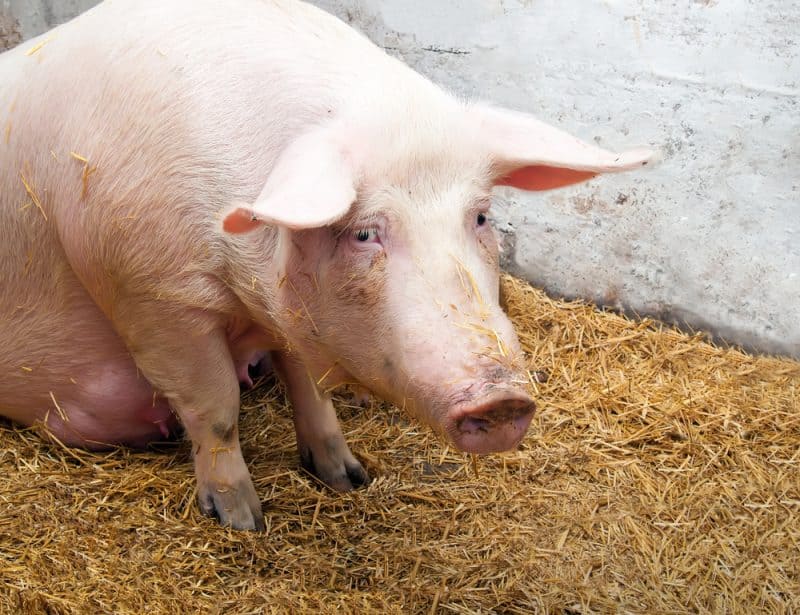
Mycoplasma arthritis can be gradual in onset, but generally, the older the pig, the more sudden the onset of symptoms.
These can vary based on the pig but include:
- A reluctance to rise
- Lameness or “dog sitting”
- Swelling over the hock joints
- Standing for very short periods of time
- Elevated temperature
- Shivering
- Unwillingness to eat or drink
Mycoplasma arthritis can be a recurring issue among breeding gilts and sows.
Believe it or not, this is a disease that can be completely asymptomatic in many cases. In other situations, you may only notice a change in the gait of an affected pig.
However, in some pigs, it can cause severe symptoms in as little as 24 hours. You may notice your pigs screaming when being forced to rise or when jostled by other pigs. Affected animals often cannot compete for food and water so can die from dehydration or starvation. They are also more susceptible to attacks by other pigs.
Therefore, it’s essential to act immediately if you suspect that mycoplasma arthritis is making your pigs sick.
Treating Mycoplasma Arthritis
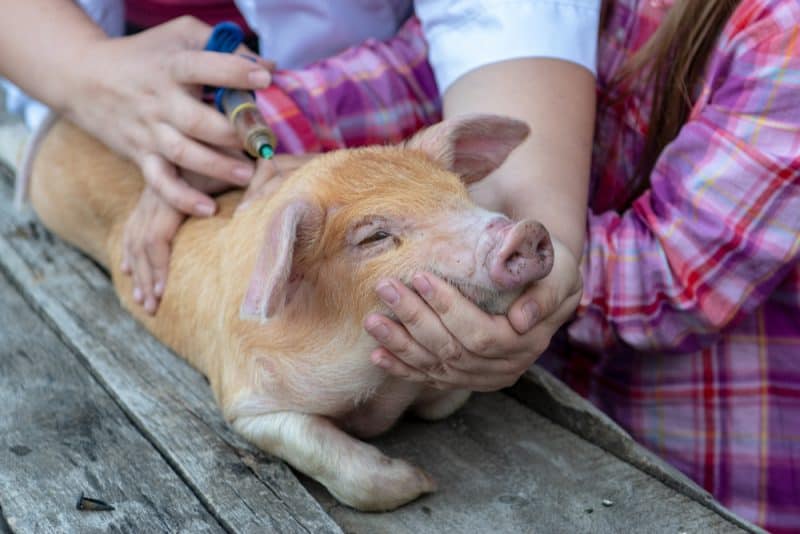
Mycoplasma hyosynoviae is naturally found in the tonsils of healthy sows.
Again, wait long enough, and all of your pigs should develop an immunity.
However, that doesn’t mean you can let it go untreated.
If you don’t do anything to address this disease in your herd, it can cause a serious loss of production as your animals won’t want to move or eat.
Therefore, take the following steps to treat mycoplasma arthritis.
1. Make Sure it’s Mycoplasma Arthritis
Before you take steps to treat mycoplasma arthritis, make sure this is actually what’s making your pigs sick.
Many other diseases present similar symptoms to this disease. While most can also be treated with an antibiotic, that’s not always the case.
If you aren’t sure which pig disease is affecting your animals, contact a veterinarian.
Only a vet will know exactly what you’re dealing with. They will have the tools and techniques necessary to help you work through it.
2. Use an Antibiotic
The good news about mycoplasma arthritis is that it tends to be very responsive to a short course of antibiotics. Pig producers generally use tiamulin, tylosin, or lincomycin for a few days. These antibiotics should be used on only affected animals.
These medications are normally given via an injection.
However, they can sometimes also be applied to drinking water. A medicated feed is another option.
Again, always consult your veterinarian before administering any kind of medication. In some places, a veterinarian’s prescription is needed for these medications, anyway.
3. Isolate an Affected Pig
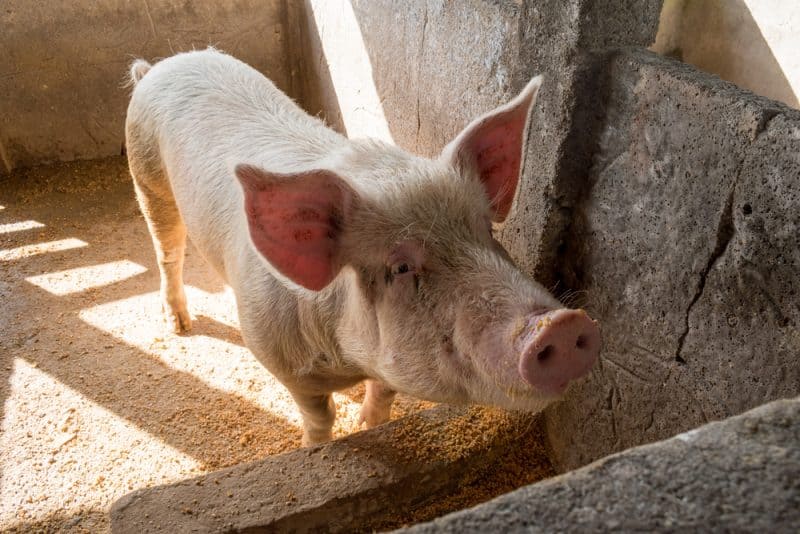
If you can, isolate the affected pig.
There’s a strong chance that your other pigs already have come into contact with this bacteria and may not ever show any symptoms.
However, it’s a good idea to get the sick pig away from the others for her own wellbeing.
As I mentioned earlier, sick pigs are more likely to be further injured by others. They’ll also be unable to compete for food and water and need to be fed separately as a result.
4. Increase Feed and Water Rations
When your pigs are down and out, one of the most important things you can do is to make sure they are provided with ample amounts of feed and water.
I already mentioned that fighting and competition will be more intense and more difficult for your pigs to bear when they are sick with mycoplasma arthritis.
Therefore, it’s a good idea to add additional feeding and watering stations.
Also, increase rations of both to make sure everybody gets their fair share. A weak, hungry pig will be less able to fight off an infection than a well-fed one.
Preventing Mycoplasma Arthritis
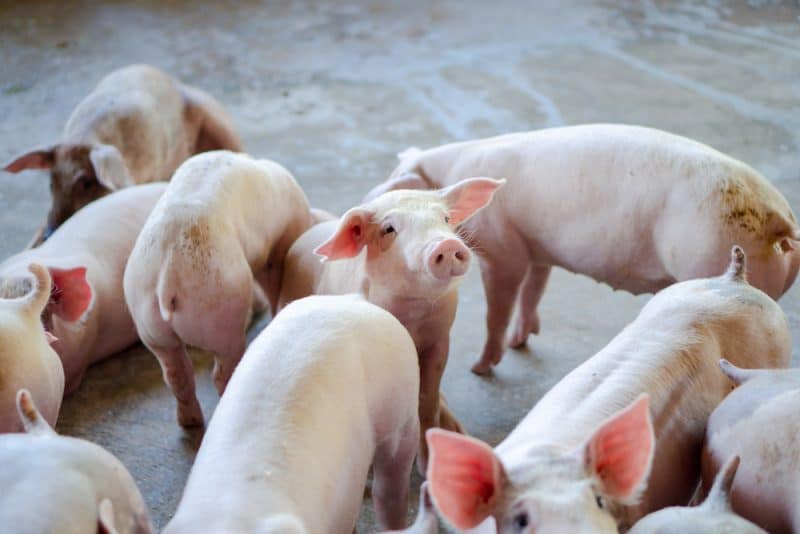
Here are some general tips to help you prevent mycoplasma arthritis from affecting your pigs. Again, this bacteria is found naturally in the respiratory tracts and living environments of most healthy pigs.
The goal here is not to eliminate the bacteria completely. It is to make sure your pigs don’t get sick from it.
1. Maintain a Clean Housing Environment
These bacteria, like most, grow and multiply best in anaerobic conditions. It is often spread from pig to pig on contaminated drinkers and feeders.
It can survive drying for up to 4 weeks, allowing for some indirect infection from the environment.
Keeping the housing area clean and free of debris and manure can help reduce the likelihood of transmission.
2. Be Careful at Vulnerable Times

There are certain periods in a pig’s life when he or she is more susceptible to mycoplasma arthritis.
Adding new pigs to a herd is always a sensitive period, as is any situation that can be stressful, such as transporting them. Another vulnerable period is pregnancy and parturition (farrowing).
Keep a watchful eye on your pigs during these periods. In some cases, using a preventative course of antibiotics might be necessary, but again, it’s always a good idea to check in first with your veterinarian.
Do your best to minimize stress by offering plenty of food and water and reducing stocking densities during transportation and intermingling of herds.
3. Reduce Stocking Densities
Since mycoplasma bacteria can also be spread from pig to pig as they pass each other, it’s a good idea to reduce your stocking densities.
Don’t overcrowd your pig barn. Also, make sure your pigs can roam freely outside, as this can reduce the likelihood of infection.
It also helps in another way, which is that it reduces fighting. Pigs that fight are more likely to be infected with bacterial infections of all kinds, including mycoplasma arthritis.
Is There a Vaccine for Mycoplasma Arthritis?
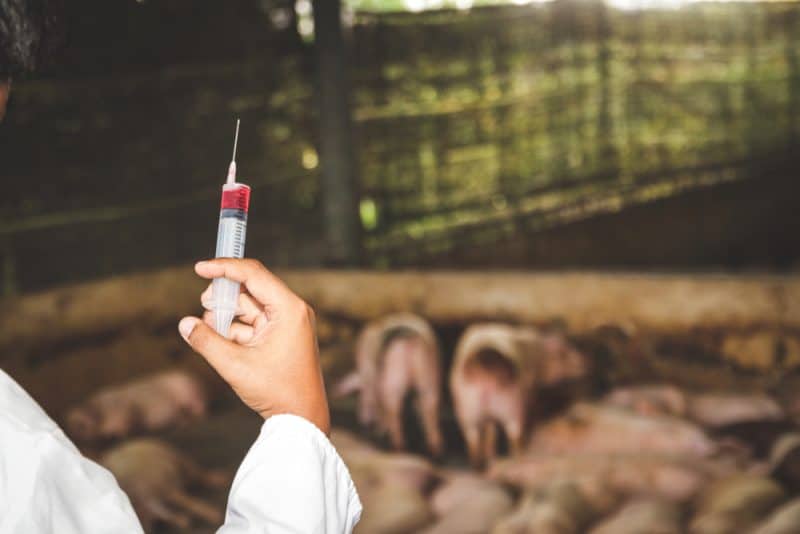
There is no vaccination available for this common pig disease. While a gilt or sow can pass antibodies onto her young to help protect them through the colostrum, it’s important to note that these antibodies do eventually wear off.
Because of this, you must follow the tips above to help you identify, treat, and prevent this potentially devastating disease. In our case, a short course of antibiotics was all it took to clear our sow of her ailments and get her back into fighting shape.
Of course, being vigilant is always the best thing you can do – so interact with your herd daily to prevent this and many other pig diseases in your animals.



